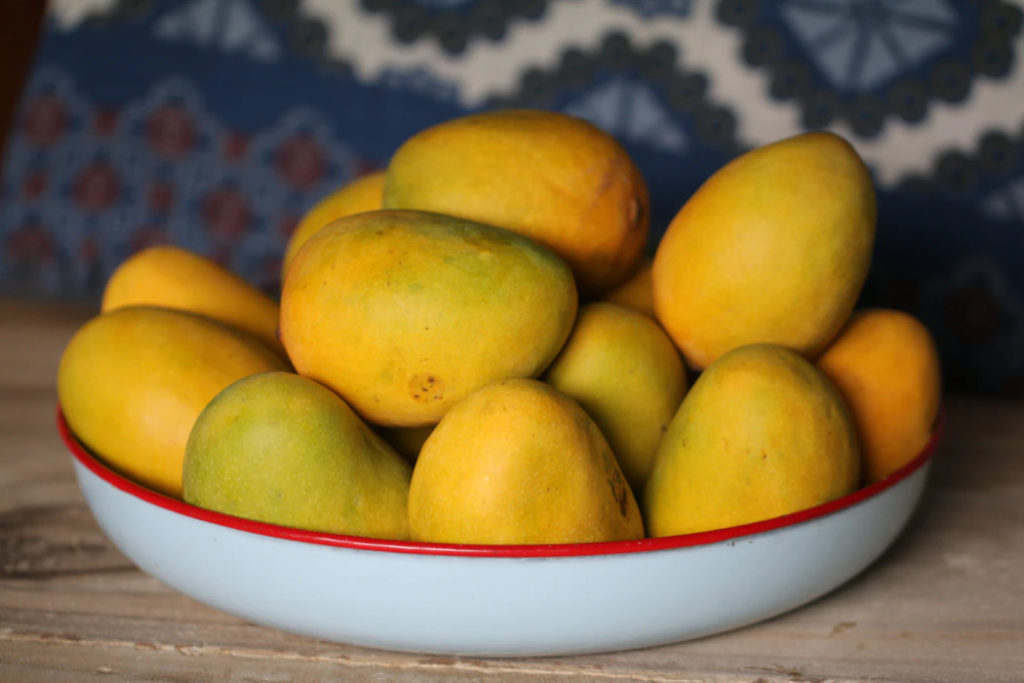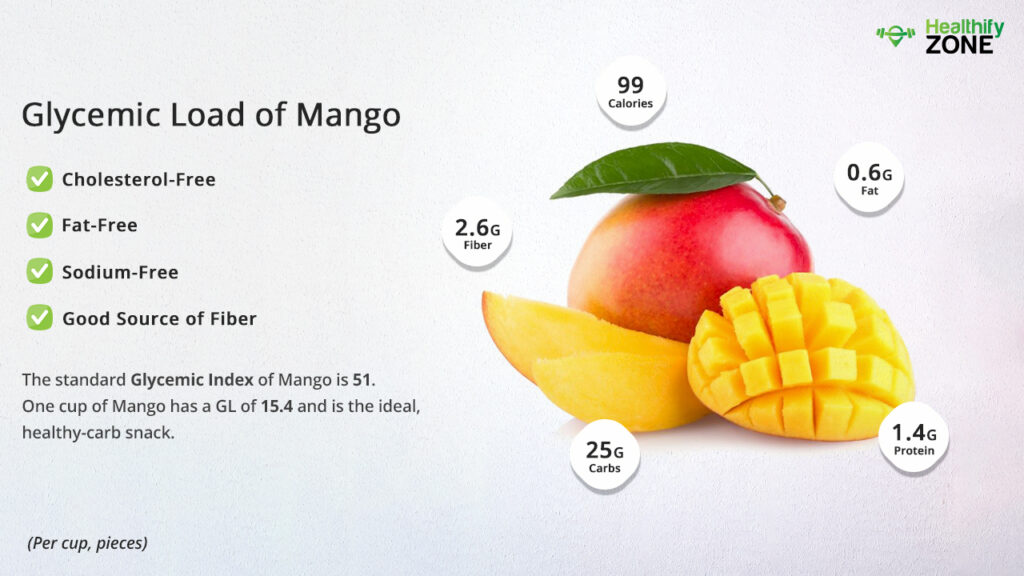The quantity of carbohydrates present in food and how quickly they can increase blood glucose levels can be measured as Glycemic Load. A convenient way of making healthier dietary choices is by just going through the Glycemic Index. It shows you alternative sources of nutrients according to your blood glucose levels. Glucose shows a higher blood glucose response compared to fructose.
Mangoes are tropical fruits and come from the drupe family. It is sweet, has golden skin on it, and is absolutely delicious. It is a rather sweet fruit with high sugar content. Research suggests that the phytochemicals present in mangoes can suppress fat cells and fat-related genes. This is also a great alternative for junk food and unhealthy food items.

Mango has a lot of nutrients and health benefits. Here is a breakdown of the same:
- Vitamin A- Good for Vision and Eye strength
- Vitamin C – Improves the heart-capacity, prevents cancer, etc.
- Potassium
- Vitamin B-6
- Protein
How to Calculate Glycemic Load of Mango?
The standard Glycemic index of Mango is 51. The high glycemic index of the fruit helps in reducing the risks related to cardiovascular diseases. If we want to talk about diet, the key to prevent diabetes or any chronic illness is to distribute the carbohydrate consumption content throughout the day and manage the sugar levels in the body correctly—Mango has a good percentage of Vitamin C and Potassium. Also, it is calorie-dense and thus you can have it 30 mins before hitting the gym.

The Formula/Procedure For Calculation of Glycemic Load of the Mango :
GL = GI * carbs / 100
where
- GL – glycemic load;
- GI – glycemic index;
- and carbs – the amount of carbohydrates in the portion.
| SL.NO | MANGO BY WEIGHT IN (g) | GLYCEMIC LOAD |
| 1. | 100 g of Mango | 7.7 (low) |
| 2. | 250 g of Mango | 19.25 (high) |
| 3. | One Whole Mango (Small) | 15.4 (high) |
| 4. | One Whole Mango (Medium) | 26.95 (high) |
| 5. | One Whole Mango (Large) | 38.5 (high) |
| 6. | 1 Cup of Sliced Mango (200 g) | 15.4 (low) |
Is Mango Safe to Consume If You Have Diabetes?
About 90% of the calories present in Mangoes come from sugar, which can cause increase blood sugar levels in people. However, its GI of 51 makes it a good choice for diabetic people, in moderation. Mangoes are high in fiber and have several antioxidants, which help reduce the overall blood sugar impact. Mango is considered a healthy carb choice, but people with diabetes must eat it in moderation.
Can I Eat Mango During a Fat-Loss Diet?
Research shows that mango can be helpful in controlling weight. If you want good results, you must avoid any more than a cup (200 g) of sliced mango.

- A cup (200 g) of mango has a GL of 15.4 which is in the permissible levels.
- A whole mango is something which shoud be taken rarely if you are on a fat-loss diet.
- Mango as a salad ingredient is premissible in a fat-loss diet.
Can I Eat Mango During a Low-Carbohydrate Diet?
You can eat mangoes during a strict low-carb diet. However, you must be mindful of the portion size that you consume. We suggest you not consume more than 200 g of watermelon per servings.
Is Mango High in Sugar?
Mangoes are high in water content. About 100 g of mango would have 14 g of sugar and 15 g of carbohydrate. So, it is very sugary but will not increase your blood glucose levels like other fruits. It is a highly recommended fruit but in moderation.